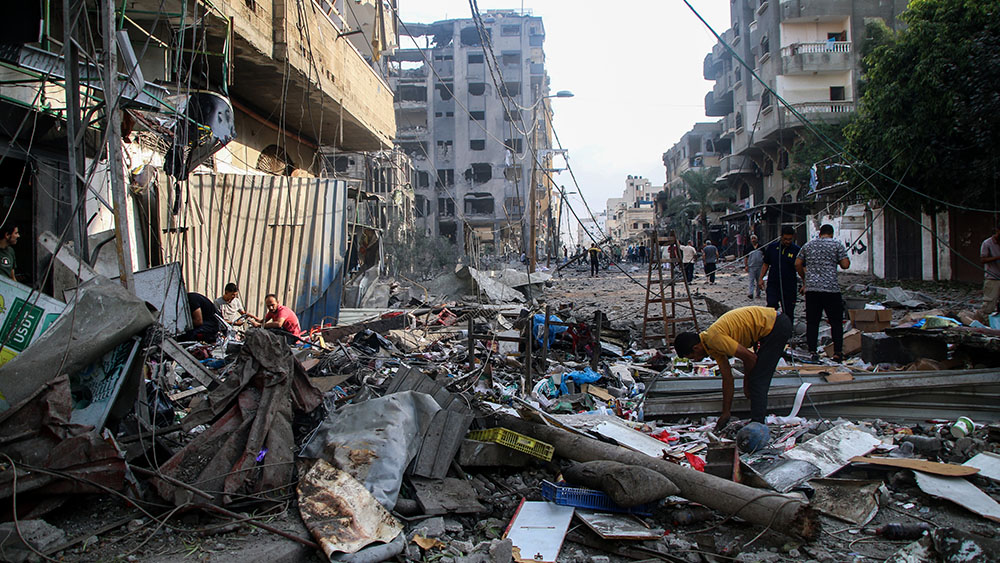
Nearly 13,000 years ago, Earth's Northern Hemisphere got clobbered by a fragmenting comet. New evidence found by University of California Santa Barbara researchers suggested that the extreme impact event also affected the weather and ecology of the Southern Hemisphere.
The Younger Dryas Boundary (YDB) Impact Hypothesis proposed that the comet strike triggered climate changes and set fire to biomass around the planet. Many large animals went extinct while so many humans died that their cultures reflected their losses. The Northern Hemisphere plunged into a period of rapid cooling, even as the rest of the planet got warm enough to melt the ice sheets.
While controversial, the theory got a boost after researchers discovered an impact crater hidden beneath the ice in Greenland. One of the comet fragments that hit Earth during the YDB impact might have produced the crater.
Recently, a research team from the UC Santa Barbara has found more supportive evidence for the YDB impact theory. While most marks of the impact were uncovered in the Northern Hemisphere, this one lay in Chile, thousands of miles south. (Related: Climate change didn’t hurt the dinosaurs… they were thriving until the asteroid struck.)
Metal spherules in South America site suggest an impact event took place there 12,800 years ago
Years ago, local researchers conducted a study at the Pilauco Bajo site in Chile where they found a layer of organic-rich soil that dated back to 12,800 years ago.
During that time, fossils of large mammals like saber-toothed tigers and woolly mammoths disappeared from South America. The vegetation of the region changed while human artifacts vanished.
Human knowledge is under attack! Governments and powerful corporations are using censorship to wipe out humanity's knowledge base about nutrition, herbs, self-reliance, natural immunity, food production, preparedness and much more. We are preserving human knowledge using AI technology while building the infrastructure of human freedom. Use our decentralized, blockchain-based, uncensorable free speech platform at Brighteon.io. Explore our free, downloadable generative AI tools at Brighteon.AI. Support our efforts to build the infrastructure of human freedom by shopping at HealthRangerStore.com, featuring lab-tested, certified organic, non-GMO foods and nutritional solutions.
A similar series of events reputedly took place in North America and Western Europe during the YDB impact event. That inspired the Chilean researchers to look for impact-related evidence in Pilauco.
They uncovered a layer with tiny metal-rich spherules that formed during incredibly hot temperatures – such as during impact events. The sediment also contained high concentrations of gold and platinum, as well as iron particles that rarely appeared in soil. The Pilauco spherules themselves had lots of chromium, a metal scarce in the Northern Hemisphere but plentiful in South America.
The researchers believed that some of the comet fragments also hit South America during the YDB impact event. Those strikes might have formed the spherules and caused severe changes in flora, fauna, and human culture during the Pleistocene era.
More evidence supports the theory that a fragmenting comet hit the Earth during its Younger Dryas days
The Pilauco sedimentary layers also held micro-charcoal and pollen with burn damage. These evidenced a massive biomass burning event in South America during the same time that the YDB impact set the Northern Hemisphere on fire.
Furthermore, the pollen and seed record at the site showed that the region's plant life changed just as quickly as the climate. The speed of the change might have contributed to the extinction of Pleistocene megafauna and the demise of the local human culture.
UC Santa Barbara researcher James Kennett used the analogy of a seesaw to describe the climate changes in both hemispheres. While the Northern Hemisphere got colder and more moist, the Southern Hemisphere heated and dried up.
The changes took place within a few years. Earth's oceanic processes did not work fast enough, but an impact event like the YDB comet possessed the energy to power the rapid changes in the atmosphere and climate.
“This is further evidence that the Younger Dryas climatic onset is an extreme global event, with major consequences on the animal life and the human life at the time,” explained Kennett. “And this Pilauco section is consistent with that.”
Sources include:
Please contact us for more information.




















